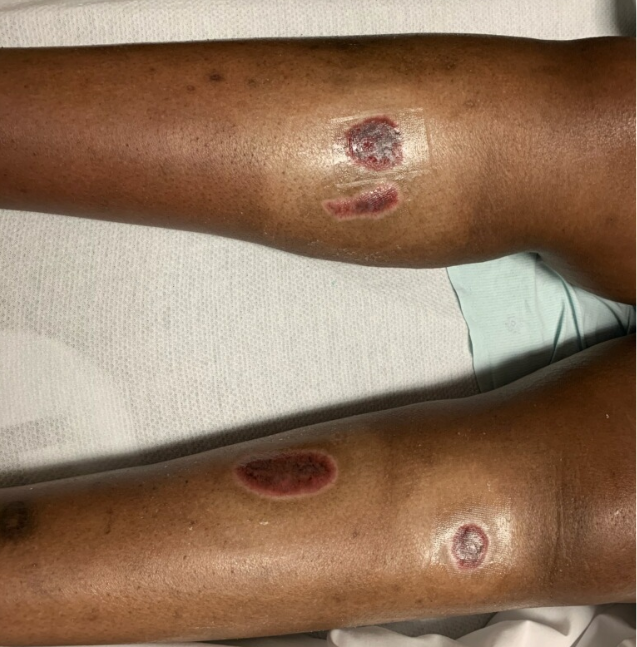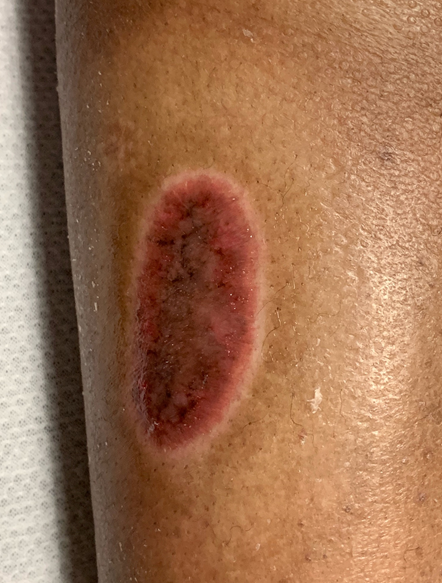Netflix has a new series called “Diagnosis.” The star is Lisa Sanders, MD, a columnist for The New York Times Magazine which publishes her column, also called “Diagnosis,” in which she presents a puzzling medical case and people from around the world help her figure out what it is. In other words, she is crowdsourcing the diagnostic process.
I never cease to be amazed by the frequency with which a so-called rare condition is the underlying reason for the SYMPTOM of a chronic wound. After January 1, an advanced practitioner does not have to physically BE in the wound center. I wonder what will happen to these patients? They don’t need a dressing change clinic, they need a place they can go to get the underlying disease diagnosed that is causing the SYMPTOM of a chronic wound. Maybe telemedicine will be the answer, but I am not so sure.
Every wound management doctor has a short list of brilliant colleagues who are willing to read text messages at all hours, usually with an appended photo and the caption, “What the heck is this?” Ironically, within minutes of my reading the AMA story about Dr. Sanders, a colleague texted me photos of a patient and said, “Have you ever seen THIS?” I said, “Let’s crowdsource it.” So I am. We need a diagnosis for this patient.
I know these details are sketchy – this is from a midnight text message – but here it goes:
There are 3 patients status – post organ transplant with the same cutaneous lesions. One patient had a lung transplant due to idiopathic pulmonary fibrosis, and the two liver transplants were due to NASH (Nonalcoholic steatohepatitis- “fatty liver”). They do not have mucosal lesions- only cutaneous skin lesions. The patients are not HIV positive. All are on Tacrolimus. In two patients the lesions are on the legs and in one patient they are on the forearm. They have all been biopsied, sometimes more than once and the findings (read by dermatopathology) were non-specific (no neutrophilic infiltrate although of course all 3 are on immunosupressives). Viral, acid-fast and fungal studies are negative. They appeared spontaneously and were not triggered by trauma. They don’t hurt unless you manipulate them. Topical steroids didn’t help, intralesional steroids did not help, nor did taking 40 mg of prednisone a day orally.
What’s the diagnosis?

Dr. Fife is a world renowned wound care physician dedicated to improving patient outcomes through quality driven care. Please visit my blog at CarolineFifeMD.com and my Youtube channel at https://www.youtube.com/c/carolinefifemd/videos
The opinions, comments, and content expressed or implied in my statements are solely my own and do not necessarily reflect the position or views of Intellicure or any of the boards on which I serve.





Although the patient is not on dialysis could be calciphalyxis
consider early exotic infectious illness triggered by steroids and stress (leishmaniasis, histoplasmosis and anaerobic soil organisms)
Love the Diagnosis show!! Figure 1 is an App that is also terrific for crowd sourcing information. Pyoderma Gangrenosum? albeit not painful … occurs spontaneously … also have a similar case I’m looking at … Any drainage? debridement? is it superficial or full-thickness? hard to tell from photo … current treatment?
Behcet’s although no mucosal involvement necrobiosis is a valid thought that can be seen on H&E, not PG as that is neutrophil dependent peroxidase degranulation also seen on H&E…what does the peripheral blood smear look like, SPEP, procoagulant assays???
Similar organ failure history, sure there isn’t a Polycolonal agammagobulinopathy at play?? Or vasculidities??
Lymphoma from GVHD??
What other drugs are they taking?
Reaction on the medication
How about Necrobiosis lipoidica?
Mycosis fungoides? Agree with Dr. Palko-Schraa to consider “zebras” here due to immunosuppression.
Would obtain an incisional biopsy of two of the lesions. One piece of tissue needs to be sent for formal histopathology (& read by an experienced pathologist) and the second piece of tissue to be sent for PCR (see advice of an infectious disease physician).
Possibly due to inability to regulate inflammation. Grafts help modulate inflammation up or down. The graft will decrease the pain . Obviously a negative culture and path report can leave you wondering. But the patient wants that hole closed and does not care what label you place on it.
Need to make a diagnosis and treat accordingly… the hole won’t close if you don’t.